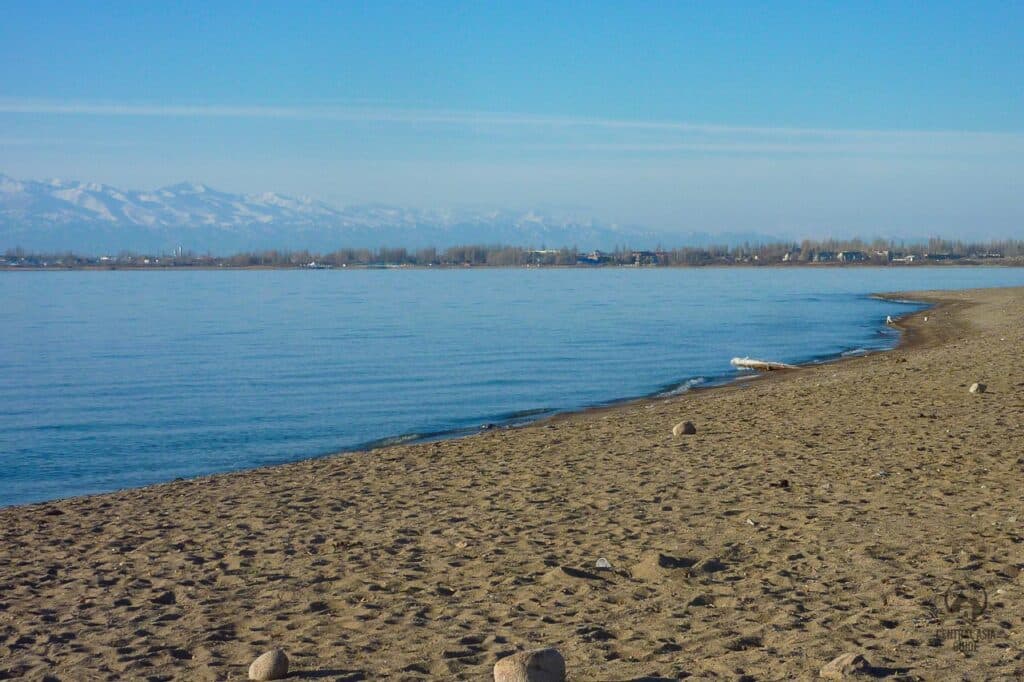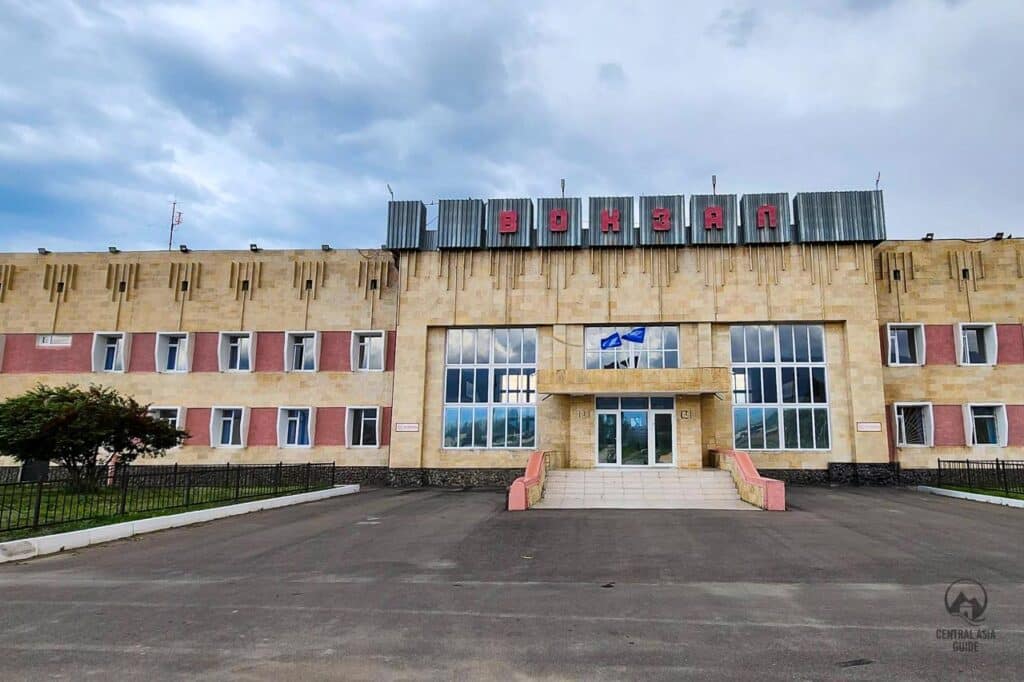Balykchi
Balykchi
Nestled on the western end of Lake Issyk-Kul in Kyrgyzstan, Balyckhi (officially Balykchy) is a charming town at 1630 m elevation that serves as the gateway to one of Central Asia’s most breathtaking regions. Once a Soviet fishing port, Balyckhi offers an authentic slice of Kyrgyz life set against the stunning backdrop of the Tian Shan Mountains. Until the very latest years, most visitors and tourists have bypassed this town on their way to southern or northern route around Issyk Kul. The town still looks mostly more like a decrepit Soviet industrial


History of Balykchi
The history of Balykchy begins with a post station and farm, established by M. I. Bachin, a retired soldier of Naryn Fort in Kyzyl Tokoy area in 1884. At the end of the 19th and beginning of the 20th century the settlement was known as Ketmaldy (the nearby river’s name), Novodmitrievka (after the family name of the owner of a local stud-farm; E.S.Dmitriev), and Bachino (after M. I. Bachin). It was named Rybachye (fishing place in Russian) from 1909-1993 when it was the fishing and fish processing center of Kyrgyzstan. In the early 1990s, following the disintegration of the Soviet Union, the town was known as Issyk-Kul, taking the name of the adjacent lake. Shortly after independence, its name was changed to Balykchy which means fisherman in the Kyrgyz language.
Though many travelers come for the lake, Balyckhi’s history is fascinating in its own right. The town’s story spans from ancient trade routes to the Soviet industrial era, leaving behind intriguing sites and cultural layers. Balyckhi was shaped by Silk Road caravans, Russian settlers, and Kyrgyz fisherfolk, all contributing to its unique character today. Below is a brief timeline of Balykchy’s historical milestones:
(For a deeper historical dive, ask locals about Rybachye’s Soviet heyday or visit the museum’s section on the Silk Road artifacts, which illuminate how global history flows through this little town.)
Balykchi sights
Balyckhi may be a modest town, but it boasts an array of attractions that cater to nature lovers, history buffs, and adventure seekers alike. Bold and friendly, the town invites visitors to explore its lakeside panoramas, cultural sites, and outdoor activities. Here are the must-see sights and experiences:
Issyk Kul lake and beaches
The number one attraction of Balykchi is undoubtedly Lake Issyk-Kul itself – a vast blue expanse framed by snow-capped peaks. Balyckhi’s lakefront offers few public beaches where you can sunbathe on golden sands and take a dip in the lake’s slightly saline waters. The ones looking for more services or local level services, should head towards Cholpon Ata. Visitors can enjoy swimming, kayaking, and even jet-skiing on the calm summer waters. Don’t miss an evening stroll along the shore to catch a spectacular sunset over the mountains. For a more active lake experience, consider a boat excursion. The boat excursions tend to be filled with partying locals, which is an experience as well.
Soviet heritage of Balykchi
Balykchi boats with the remains of Soviet fishing industry and also with other industrial facilities that were connected to the Soviet rail network through Bishkek. making it an interesting stopover for dark tourism enthusiasts. There is a Soviet era port that was mostly used to unload coal from the ships transferring it from the mines located at the eastern side of Issyk Kul. Another old port used for loading the ships can be found in Karakol. The old cranes stay still at the shore and some of the ships are still afloat here.


Historic railway station
A short walk in town brings you to Balyckhi’s old railway station, a relic of the Soviet era. The train station, with its classic Soviet-style architecture, marks the terminus of the railway from Bishkek2. While passenger train service nowadays is infrequent, the station stands as a living museum of 20th-century infrastructure, evoking the days when Balyckhi was a key transit hub1. Railway buffs and photographers will appreciate the vintage locomotives and the faded glory of the station building.
Balykchi Bazar
Central Bazaar (Market): For an authentic cultural experience, head to Balyckhi’s central bazaar – a bustling open-air market where the heart of the town beats strongest. Here you’ll find locals selling everything from fresh produce and dried fruits to handmade crafts and felt products. Strolling through the market is a feast for the senses: smell the spices and grilling meats, hear the mix of Kyrgyz and Russian chatter, and perhaps sample kurut (dried yogurt balls) or fresh nan bread straight from the tandoor. The market is an ideal place to pick up souvenirs and engage with friendly vendors – a chance to practice a few words of Kyrgyz or Russian and experience warm Central Asian hospitality.
Travel to Balykchi
The most common way to reach Balyckhi is by road from Bishkek, (~170 km to the west). The drive takes about 2,5–3 hours via tarmac highway. The route runs through the scenic Boom Gorge, where the road winds between red-rock canyons and the Chu River. Shared buses and minibuses (marshrutkas) depart regularly from Bishkek’s western bus station (Zapadnyi Avtovokzal). They usually leave when full, with departures every couple of hours through the day. Private taxis or car hires are also available in Bishkek. If you self-drive, note that local traffic can be unpredictable (watch for livestock on roads near villages), and there are police checkpoints where you should carry your passport and be careful with the villages where one must know the speed limits without clear signs.
In summer months, a regional trains run from Bishkek to Balykchy (historically, one daily departure). The journey is slow taking around 4 hours but extremely affordable and offers a nostalgic Soviet experience. Trains depart from Bishkek II Station and arrive at Balykchy’s old station. It’s a leisurely ride with simple bench seating but there are also newer wagons with air condition and modern seats. If you have time and love train travel, it’s a unique way to arrive, but do check current schedules as services can be seasonal. In 2025, there are also trains running from all the way from Tashkent to Balykchi.
The nearest airport with scheduled flights is in Tamchy (Issyk-Kul International Airport), about 70 km east, which has limited seasonal flights (often from Almaty, Tashkent or other Kyrgyz cities). Most international travelers will fly into Bishkek’s Manas Airport and then journey by land to Issyk-Kul.
Balyckhi itself is compact and you can walk across town in 20-30 minutes. Taxis (often unmarked cars) can be hired for rides within town or to nearby points but it is best to agree on a price beforehand. If you want to explore surrounding areas such as going to Tuz-Kol Dead Lake or to Cholpon-Ata on the north shore, taxis or minibuses that run along the main road are the options to go with.
Sights near Balykchi
Page updated 4.7.2025